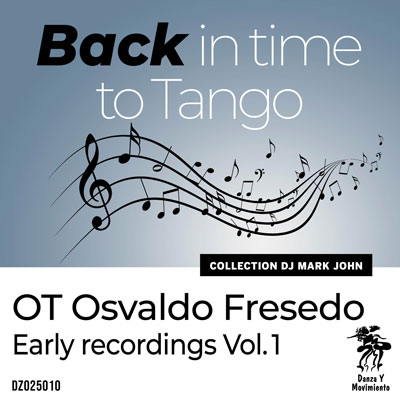
Nine albums dealing exclusively with the early recordings of Osvaldo Fresedo are currently being released. For the first time in more than 100 years, some of his music is been made available for dancing again. In addition, the careful sound processing and adaptation to the speed at which this music was recorded in the 1920s has created a sublime listening and dancing experience.
It all began with the Orquesta Tipica Vicente Loduca in 1917, when a dance orchestra with Fresedo and his bandoneon and Francisco Canaro on violin set the trend for everything that happened later in tango. The Loduca album (see below) contains all the recordings currently known of Fresedo with this orchestra.
After a trip to the New York music scene, Fresedo received a contract with the Victor label in 1922 and began performing with his own orchestra and recording in the studio. There was no electric microphone at the time. Its predecessor was a funnel, which is why it is also referred to as an acoustic recording.
Juan Carlos Cobian is on the piano. Tito Roccatagliata, with whom Fresedo has been playing for a long time, and Roberto Zerrillo are the violinists. And he finds his first future long-term companion, Alberto Rodriguez (bandoneon), who supports Fresedo on his own instrument and replaces him when necessary.
In the course of the recording sessions, Cobian drops out due to excessive drug consumption. With Jose-Maria Rizzutti, the second pillar of Fresedo's nascent career comes on board on the piano.
Tito Roccatagliata leaves at the same time as Cobian. Instead, the brilliant violinist Manlio Francia comes on board, who a few years later will also play a very important role for Julio De Caro in his recordings.
Listening to the recordings of the OT Fresedo 1922-23 – now at the correct speed – one can wonderfully follow the concretization of Fresedo's own style with Rizzuti (piano) and Francia (violin), especially from the end of 1922.
From here, a direct line of development leads to Fresedo's successes in the mid-1930s. Both Fresedo's music and that of de Caro – with whom Francia was also a regular participant as a top violinist in the 1920s – the music of D'Arienzo, Troilo or Di Sarli.would have been completely unthinkable without.
On these albums, you dance to the roots of tango dance history. Have fun listening and dancing as it was experienced 100 years ago!
A click on the cover will take you to the respective album. You will also find a link to the platform of your choice where you can stream or download the complete album.
A note for collectors: You can get our releases uncompressed e.g. as FLAC in the stores of “7 digital”. Unfortunately, this platform does not sell in all countries. But you can get the music e.g. in UK, USA, France, Italy, Spain, Norway, Sweden, Netherlands, Canada, Australia, Germany, Austria, Switzerland and some more countries.